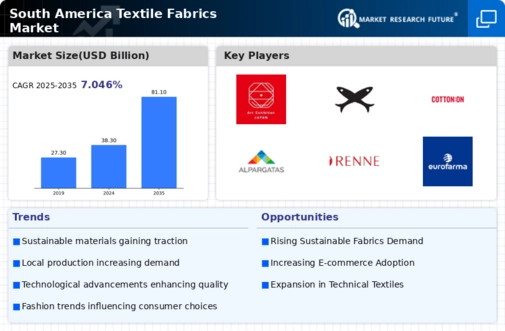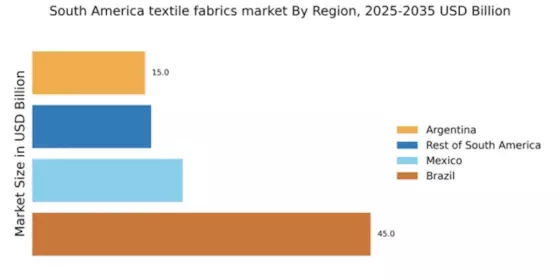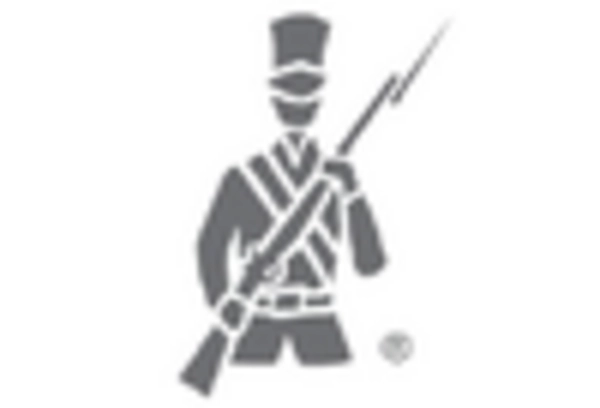Growth of the Fashion Industry
The textile fabrics market in South America is significantly influenced by the burgeoning fashion industry. With a projected growth rate of 5% annually, the demand for diverse and innovative fabrics is on the rise. Fashion designers are increasingly seeking unique textiles to differentiate their collections, leading to a surge in fabric variety and quality. This growth is further supported by the rise of local brands that emphasize cultural heritage and craftsmanship. The textile fabrics market is responding by expanding their product lines to include a wider array of fabrics that cater to both traditional and contemporary fashion trends, thereby enhancing market dynamics.
Rising Demand for Eco-Friendly Textiles
The textile fabrics market in South America is experiencing a notable shift towards eco-friendly textiles. This trend is driven by increasing consumer awareness regarding environmental sustainability. As a result, manufacturers are focusing on producing fabrics from organic and recycled materials. In 2025, it is estimated that the demand for sustainable fabrics could account for approximately 30% of the total textile consumption in the region. This shift not only aligns with global sustainability goals but also caters to a growing segment of environmentally conscious consumers. The textile fabrics market is thus adapting to these changes by investing in sustainable practices and technologies, which may enhance their competitive edge.
Export Opportunities in Emerging Markets
The textile fabrics market in South America is poised to capitalize on export opportunities in emerging markets. Countries in Asia and Africa are increasingly seeking high-quality textiles, and South American manufacturers are well-positioned to meet this demand. In 2025, exports from the region are expected to grow by 15%, driven by competitive pricing and unique fabric offerings. This expansion into international markets may provide a substantial boost to the local textile fabrics market, fostering economic growth and job creation. Manufacturers are likely to enhance their export strategies to tap into these lucrative opportunities.
Government Support for Textile Innovation
The textile fabrics market in South America is benefiting from increased government support aimed at fostering innovation within the industry. Various initiatives are being implemented to promote research and development in textile technologies, which may lead to the creation of new materials and production methods. In 2025, government funding for textile innovation projects is projected to increase by 25%, reflecting a commitment to enhancing the competitiveness of the textile fabrics market. This support not only encourages local manufacturers to innovate but also attracts foreign investment, further stimulating growth in the sector.
Technological Integration in Manufacturing
The textile fabrics market in South America is witnessing a transformation due to the integration of advanced technologies in manufacturing processes. Automation and digitalization are becoming prevalent, leading to increased efficiency and reduced production costs. For instance, the adoption of 3D knitting technology is enabling manufacturers to create complex fabric structures with minimal waste. This technological advancement is projected to improve production efficiency by up to 20% in the coming years. The textile fabrics market is thus likely to benefit from these innovations, as they not only streamline operations but also enhance product quality and customization options.


















Leave a Comment